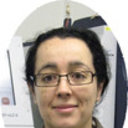The human rhabdomyosarcoma cell line TE671--Towards an innovative production platform for glycosylated biopharmaceuticals.
Keywords
Abstract
The market of therapeutic glycoproteins (including coagulation factors, antibodies, cytokines and hormones) is one of the profitable, fast-growing and challenging sectors of the biopharmaceutical industry. Although mammalian cell culture is still expensive and technically complex, the ability to produce desired post-translational modifications, in particular glycosylation, is a major issue. Glycans can influence ligand binding, serum half-life as well as biological activity or product immunogenicity. Aiming to establish a novel production platform for recombinant glycoproteins, the human TE671 cell line was investigated. Since the initial analysis of cell membrane proteins showed a promising glycosylation of TE671 cells for biotechnological purposes, we focused on the recombinant expression of two model glycoproteins of therapeutical relevance. The optimization of the cell transfection procedure and serum-free expression succeeded for the human serine protease inhibitor alpha-1-antitrypsin (A1AT) and the hematopoietic cytokine granulocyte-macrophage colony-stimulating factor (GM-CSF). N-glycan analyses of both purified proteins by matrix-assisted laser desorption/ionization time-of-flight (MALDI-TOF) mass spectrometry provided first fundamental insights into the TE671 glycosylation potential. Besides protein specific pattern, strong distinctions - in particular for N-glycan fucosylation and sialylation - were observed depending on the medium conditions of the respective TE671 cell cultivations. The cell line's ability to synthesize complex and highly sialylated N-glycan structures has been shown. Our results demonstrate the TE671 cell line as a serious alternative to other existing human expression systems.


